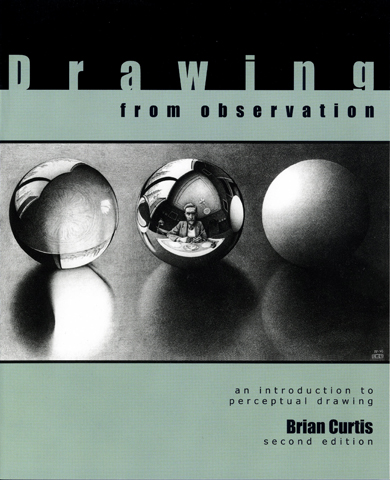| Drawing from Observation grew out of the understanding that there are fundamental, broad based educational benefits to be gained by learning to draw from observation. For at least six hundred years perceptual drawing has been considered the premier course of study for developing visual sensitivity as it not only provides developing artists with a structured series of exercises that train the eye to be descriminating and the hand to be sensitive in its touch but also provide insight into the very mechanisms of visual perception itself. While this book is primarily intended to develop one's ability to accurately record visual perceptions it is also meant to provide an understanding of spatial representation in general. Fortunately, there is no more suitable vantage point from which to encounter the visual art of the past, present, and future than the platform of rationalized perceptual space that was introduced during the Renaissance by Brunelleschi, Alberti, Piero, and Leonardo. When all is said and done, it is the understanding that is derived from knowing how images make spatial meaning that is the most fundamental and therefore the most important of all artistic tools.
This drawing text book is very different from the all others that are currently available. It is more limited, although focused might be a more appropriate description. This text focuses heavily on the techniques and underlying concepts that are essential to anyone seeking to translate three-dimensional perceptual information to a two-dimensional surface.
Drawing From Observation weaves together two complementary approaches: one rooted in hands-on drawing mechanics and the other in background theory and/or explanatory material. Illustrating the text throughout, in addition to 50 master works are 300 technical illustrations and 300 student projects.
New to the second edition is a thorough and generously illustrated chapter on Pictorial Composition that when combined with the lessons in the preceding chapters will provided the necessary mechanisms to create convincing and engaging spatial images from anything you might see or imagine. The second edition also contains 103 new student drawings, 96 new technical illustrations, and 25 new master images.
|
|
| Brian Curtis,drawing from observation,McGraw-Hill Higher Education,an introduction to perceptual drawing,drawing,perceptual drawing,observational drawing, perceptual drawing text, perceptual drawing book,free-hand drawing,drawing mechanics,drawing paper,easel set-up.renaissance drawing,renaissance perspective,perspective drawing,intuitive perspective,scientific perspective,linear perspective,one-point perspective,two-point perspective,three-point perspective,chiaroscuro,continuous-tone drawing,continuous tone drawing,shading,foreshortened circles,ellipses,circles in perspective,circles in space,perceptual grid,drawing grid,alberti's veil,mondrian grid,,x/y axis,golden mean,proportion,sacred geometry,perspective history,intuitive gesture,drawing mechanics,compositional dynamics,gestalt principles,picture plane dynamics,emphasis by isolation, emphasis by contrast. tangency,visual scanning patterns,visual interest created by spatial proximity, compositional principles, |
|

